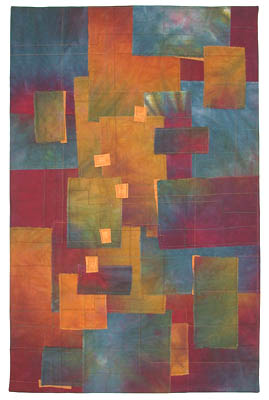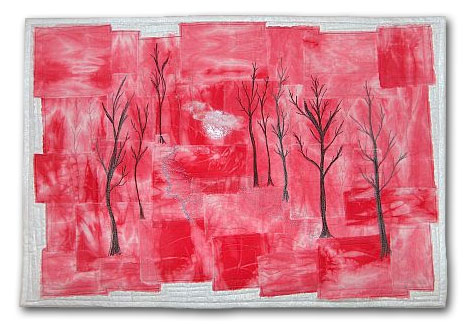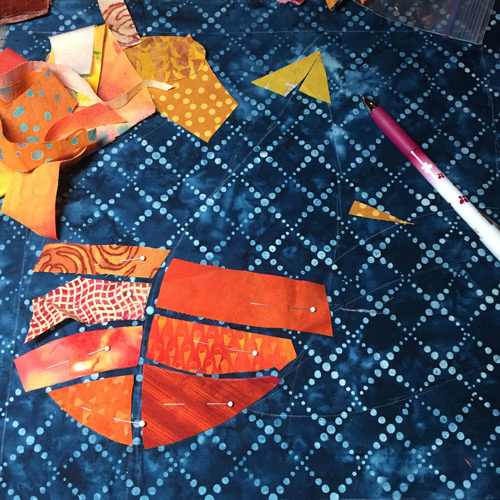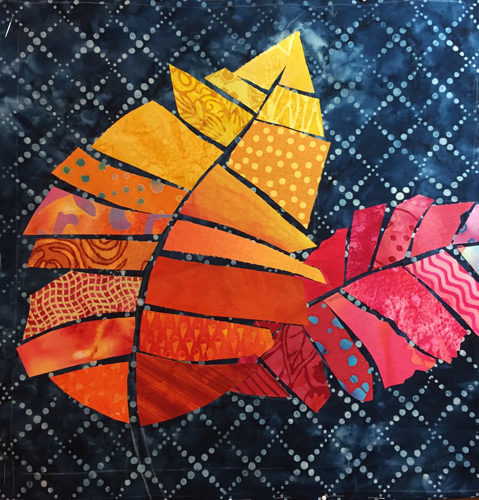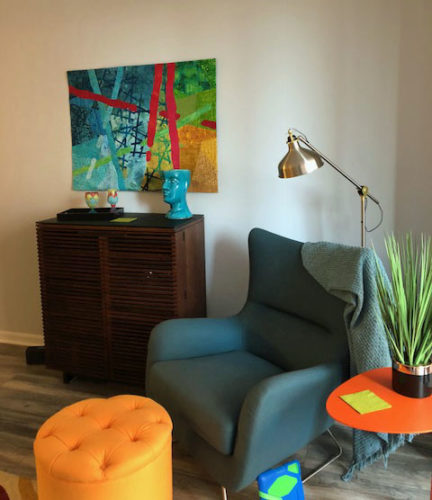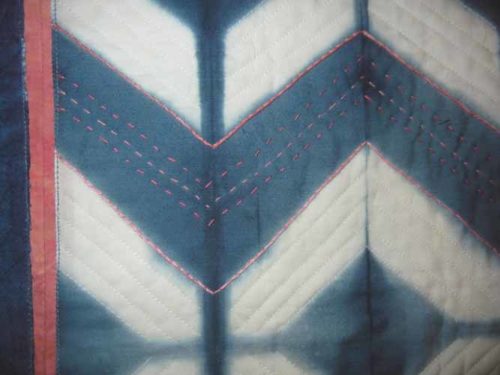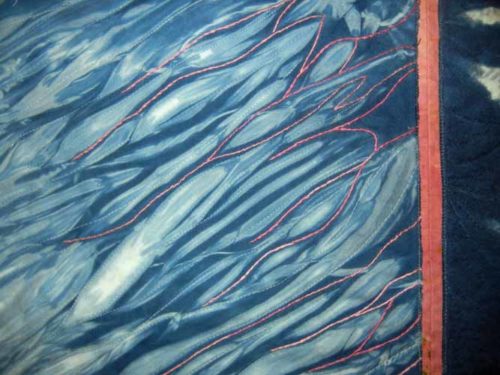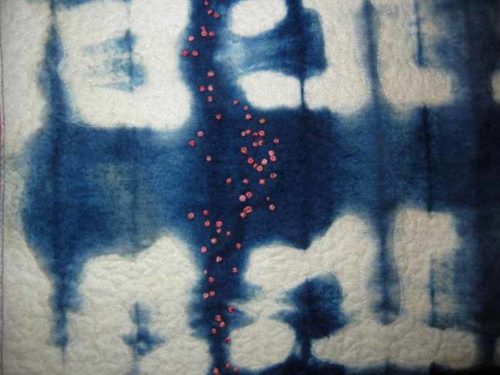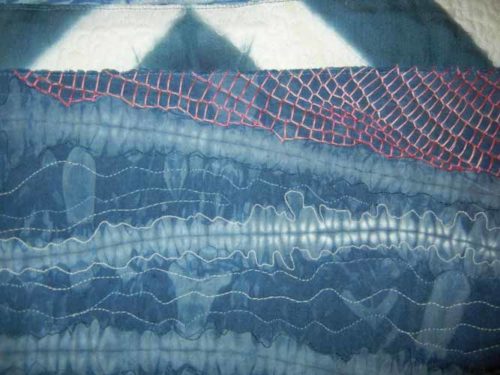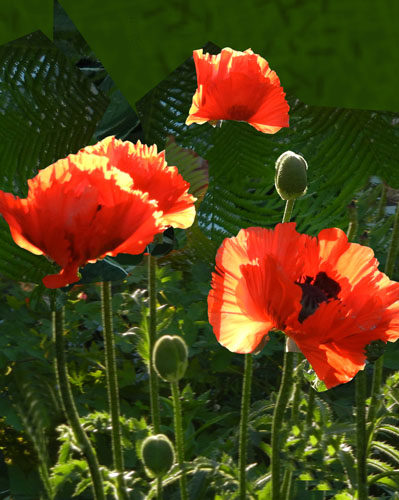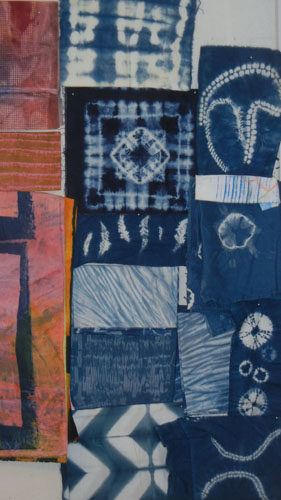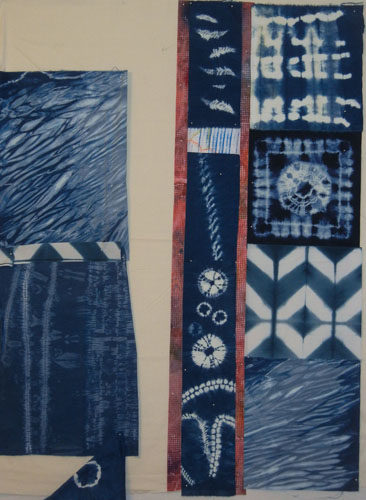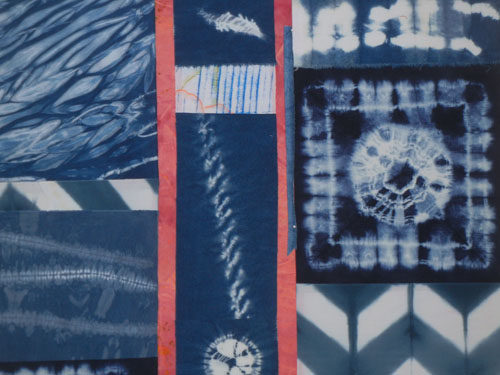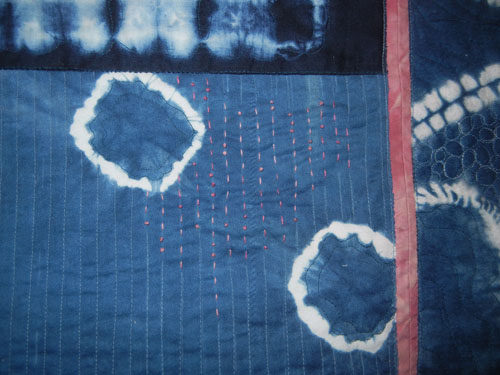I always love teaching and a recent class in The Villages, FL was no exception. The class was called “Floral Improv” and we had a GREAT time together!
Although I didn’t get photos of every quilter with her results, I think you can see the joy on the faces of those I did capture. They were thrilled to accomplish so much in one day!
Lynn had to leave early, but still managed to complete her entire composition and start on the outline stitching.

Karen completely finished her piece in class and was delighted with it. Can you see her “fussy cut” leaves? She used various motifs cut from a perfect fabric.

Students arrive with their backgrounds already quilted and their fabrics already fused. Therefore, they’re ready to start creating flowers right away – WITHOUT patterns. We start with daisies, which are super easy. Next come the poppies. Flower units are made and set aside until it’s time to compose everything. A few design tips from me and then everyone jumps in.

Flowers are positioned first, then stems, and finally leaves. Everything is fused in place and it’s time to stitch it all down.
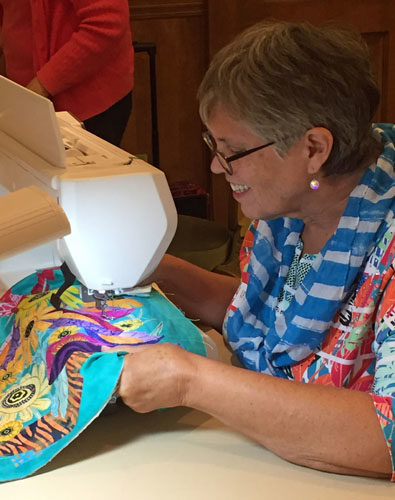
Black thread is used on the poppies to add petals and definition. It really adds a lot.

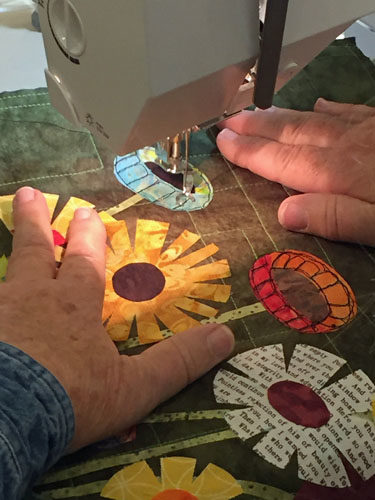
Donna’s results were cheerful and lively.

Don’t you love Polly’s patterned flowers and “jagged cut” leaves?
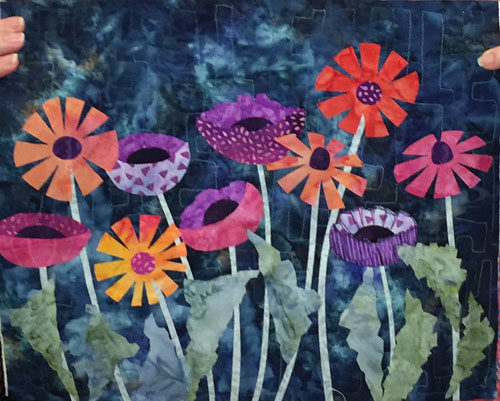
Mary selected a diagonal design and quilted the background with sharp angles. A very nice contrast.
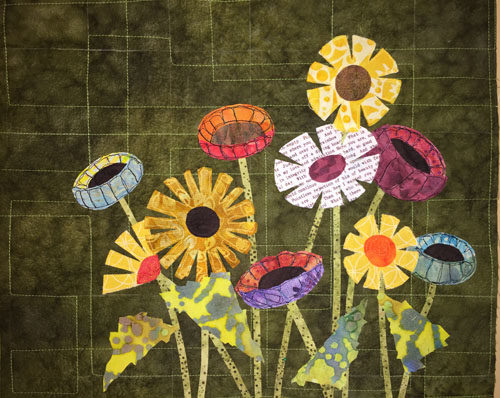
Alice’s soft background allowed the dark flowers to pop.

But wait, there’s more! Look for the next post with more of these wonderful class results.
Ellen Lindner
P.S. Find out more about this class.
P.P.S. See the Floral Improv Gallery



